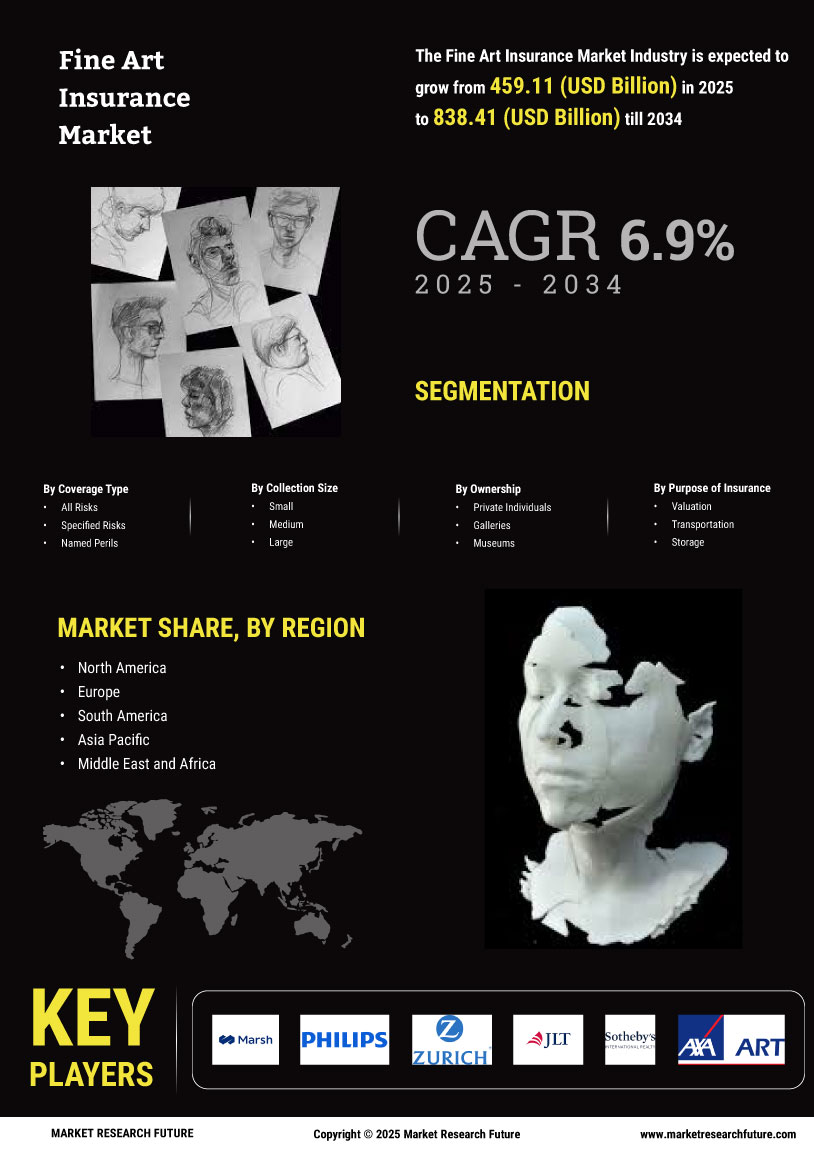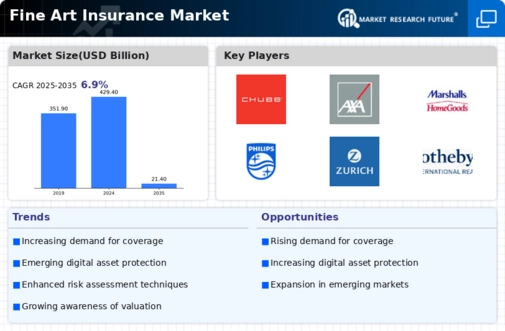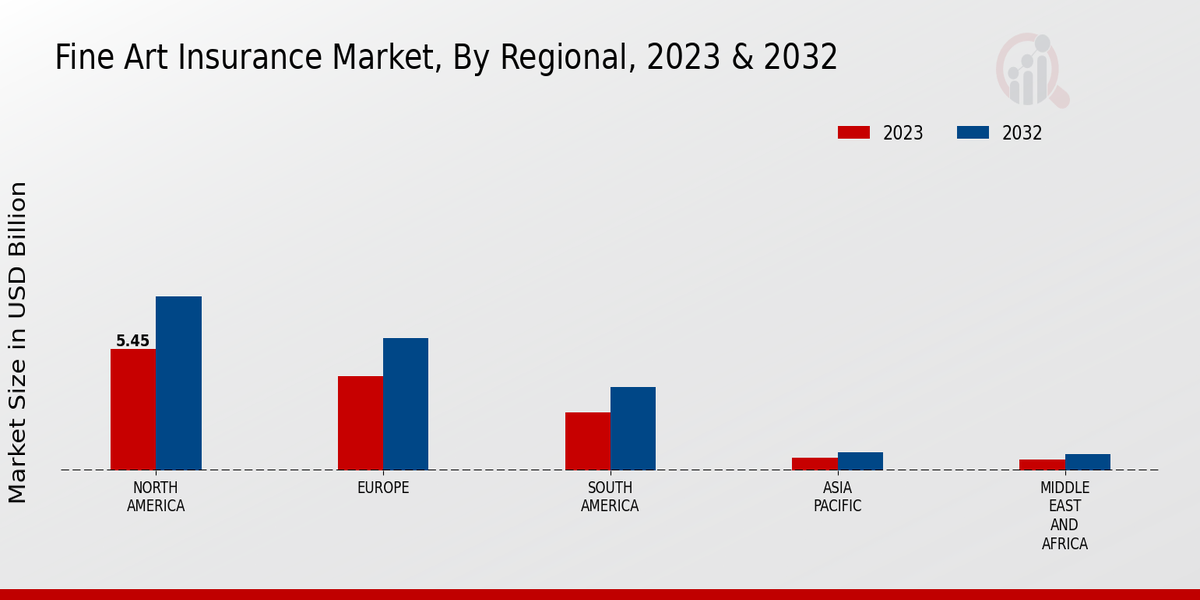Rising Art Valuations
Art valuations have been on an upward trajectory, which significantly influences the Global Fine Art Insurance Market Industry. As the value of artworks increases, the necessity for adequate insurance coverage becomes more pronounced. The art market's growth, evidenced by record auction sales and rising prices for contemporary and classic pieces, necessitates comprehensive insurance solutions. This trend suggests that collectors are increasingly aware of the financial implications of art ownership, leading to a heightened demand for fine art insurance. Consequently, the market is expected to flourish, driven by the need to protect investments that are projected to reach 21.4 USD Billion by 2035.
Globalization of the Art Market
The globalization of the art market is reshaping the dynamics of the Global Fine Art Insurance Market Industry. As art transactions increasingly occur across borders, the complexity of insuring artworks rises. Collectors and galleries are now engaging in international sales, which necessitates comprehensive insurance coverage that accounts for varying regulations and risks in different jurisdictions. This globalization trend suggests that insurers must develop policies that cater to a diverse clientele, potentially leading to increased market opportunities. The interconnectedness of the global art market may drive demand for fine art insurance, as collectors seek to protect their investments in an increasingly complex environment.
Growing Wealth of High-Net-Worth Individuals
The increasing number of high-net-worth individuals globally appears to be a primary driver for the Global Fine Art Insurance Market Industry. As wealth accumulates, so does the demand for art as an investment vehicle. In 2024, the market is projected to reach 429.4 USD Billion, reflecting the growing interest in art collections. High-net-worth individuals often seek to protect their investments through specialized insurance policies, which cover risks such as theft, damage, and loss. This trend indicates a robust market potential, as the art market continues to expand, with affluent collectors prioritizing the safeguarding of their valuable assets.
Technological Advancements in Art Preservation
Technological advancements in art preservation and documentation are influencing the Global Fine Art Insurance Market Industry positively. Innovations such as climate-controlled storage, advanced tracking systems, and digital cataloging enhance the security and preservation of artworks. These technologies not only protect the physical integrity of art but also provide insurers with better data for risk assessment. As collectors adopt these technologies, they may feel more inclined to invest in fine art insurance, knowing that their assets are being safeguarded effectively. This trend indicates a potential growth area for the market, as insurers adapt to the evolving landscape of art preservation.
Increased Awareness of Art Theft and Damage Risks
The heightened awareness surrounding the risks of art theft and damage is a crucial factor propelling the Global Fine Art Insurance Market Industry. Recent incidents of high-profile art thefts and natural disasters have underscored the vulnerabilities associated with art ownership. Collectors and institutions are now more cognizant of the potential financial losses that can arise from such events, prompting them to seek insurance coverage. This awareness is likely to drive demand for tailored insurance products that address specific risks associated with fine art. As a result, the market is expected to see a significant uptick in policies designed to mitigate these risks.






















Leave a Comment